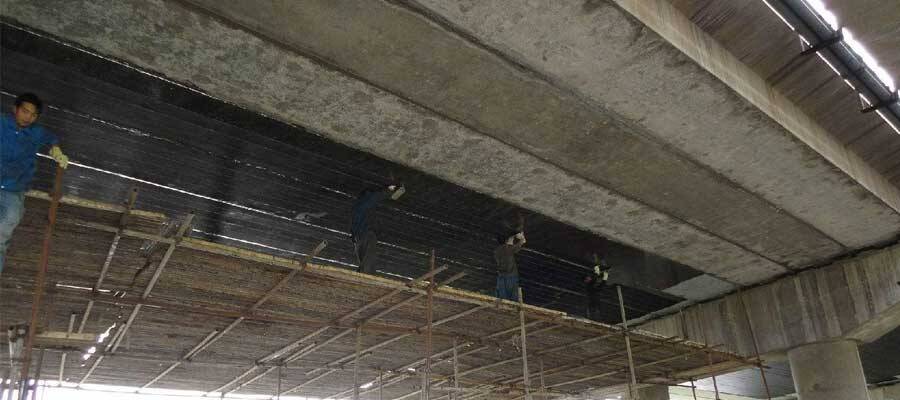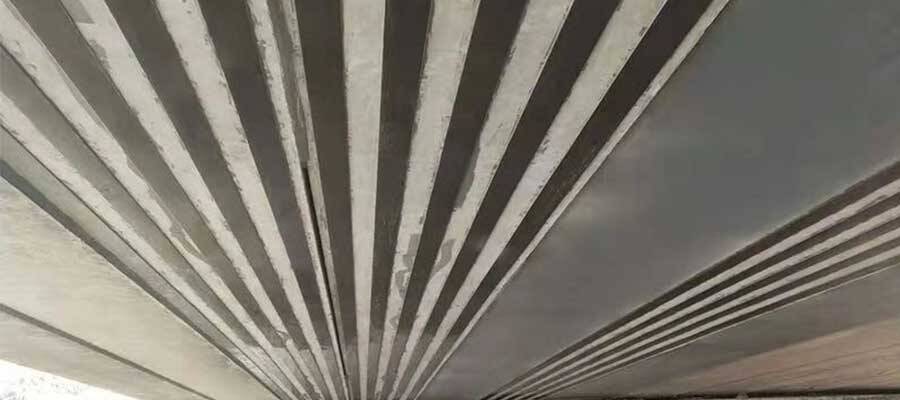Solutions
Horse Construction offers full range of structural strengthening materials with technical supports, documentation supports, products supports, project supports.
Because of the high strength and high elasticity of carbon fiber materials, the use of adhesives to paste them on the surface of the bridge, so that they can bear the load together with the bridge structure, can greatly improve the tensile, compressive and shear capacity of the bridge.
Common Diseases of Bridges
1.1 cracks
Cracks are a common disease in the use of bridges. Once the bridge cracks, the overall bearing capacity of the bridge will be greatly affected, which makes the bridge gradually lose its normal function. Therefore, in order to ensure the normal use of bridges, it is necessary to analyze and judge the types and causes of cracks, scientifically evaluate the degree of cracks, and then select reasonable and reliable technological measures to deal with and strengthen them to ensure the safety of bridges.
1.2 Reinforcement Corrosion
Most bridges are reinforced concrete structures. Under the long-term influence of the external environment, oxygen in the air enters the interior of the structure through the cracks of the concrete and diffuses through some medium, so the reinforcement in the concrete structure is corroded. Once the corrosion of steel bar occurs in the internal structure of concrete, it will directly cause the volume of the whole steel bar to expand, even several times as much as the original. At this time, if subjected to strong extrusion, it will directly lead to the destruction of the connection between steel bar and concrete, and make the whole bridge crack or even fall off. At this time, the bearing capacity of the bridge will be reduced, and there are great potential safety hazards, which increase the risk of instability of the bridge.
3. Concrete carbonization
Concrete is a kind of composite material, mainly composed of cement, aggregate and other materials. Cement mortar is mainly composed of CHS gel. Its main feature is a mesh structure, which makes it easy to crack itself. There will be cracks in the mixture after mixing with aggregate, so the composite materials such as concrete will have good permeability. When carbon dioxide in the air enters into the concrete, it will react chemically in the concrete to form a kind of carbonation, so the concrete will be carbonized in the air for a long time, resulting in the surface falling off, and some even directly causing the steel bar cracking, which has a very serious hazard to the quality and safety of the bridge.

Bridge Structural Reinforcement
Carbon Fiber Reinforcement
Because of the high strength and high elasticity of carbon fiber materials, the use of adhesives to paste them on the surface of the bridge, so that they can bear the load together with the bridge structure, can greatly improve the tensile, compressive and shear capacity of the bridge.
The operation steps of CFRP reinforcement are as follows:
(1) Clean up the surface layer of concrete which is weathered at the bridge reinforcement site in time, and chisel it to ensure the emergence of new stubble;
(2) Apply the resin evenly on the surface of the construction, without any omission. When the resin does not stick to the hand, trim the resin to ensure that the surface of the construction is smooth, and then uniformly coat a layer of impregnated resin with a thickness of 3-5 mm.
(3) Carbon fibre cloth is laid on the surface of impregnated resin, and air is extruded with sticks to ensure that carbon fibre cloth is immersed in resin, and then coated with a layer of impregnated resin with thickness of 1-2 mm.
(4) Decorate the surface properly to ensure that the appearance of the surface is consistent with the surrounding buildings.
In addition, when using carbon fiber to reinforce reinforced concrete shear members, the shear performance of reinforced concrete should be considered comprehensively. Carbon fiber material is pasted in the shear zone of the member, and the shear zone is treated with the tensile property of carbon fiber itself, so as to ensure that the structural strain of reinforced concrete can be adjusted by carbon fiber before the bending of reinforced concrete occurs, so that it can not be further expanded. When the reinforced concrete is stable, the function of carbon fibers becomes more prominent, which can effectively control the shear zone and achieve the purpose of bridge reinforcement.

In summary, the reinforcement design of the bridge is helpful to prolong the service life of the bridge. All kinds of new bridge reinforcement technologies are used in reinforcement design to promote the sustainable development of bridge construction. There are many methods to reinforce bridges, which need to be considered comprehensively according to the concrete conditions and evaluation results of bridges, and choose the most suitable reinforcement scheme to ensure the quality and safety of bridges.
You can find anything here you are in need of, have a trust trying on these products, you will find the big difference after that.

High strength carbon fiber reinforced polymer (CFRP) strip / laminate / plate for structural strengthening and concrete repair

High strength, unidirectional carbon fiber fabric pre-saturated to form a carbon fiber reinforced polymer (CFRP) fabric used to strengthen structural concrete elements.

High strength, unidirectional carbon fiber sheet pre-saturated to form a carbon fiber reinforced polymer (CFRP) sheet used to strengthen structural concrete elements.